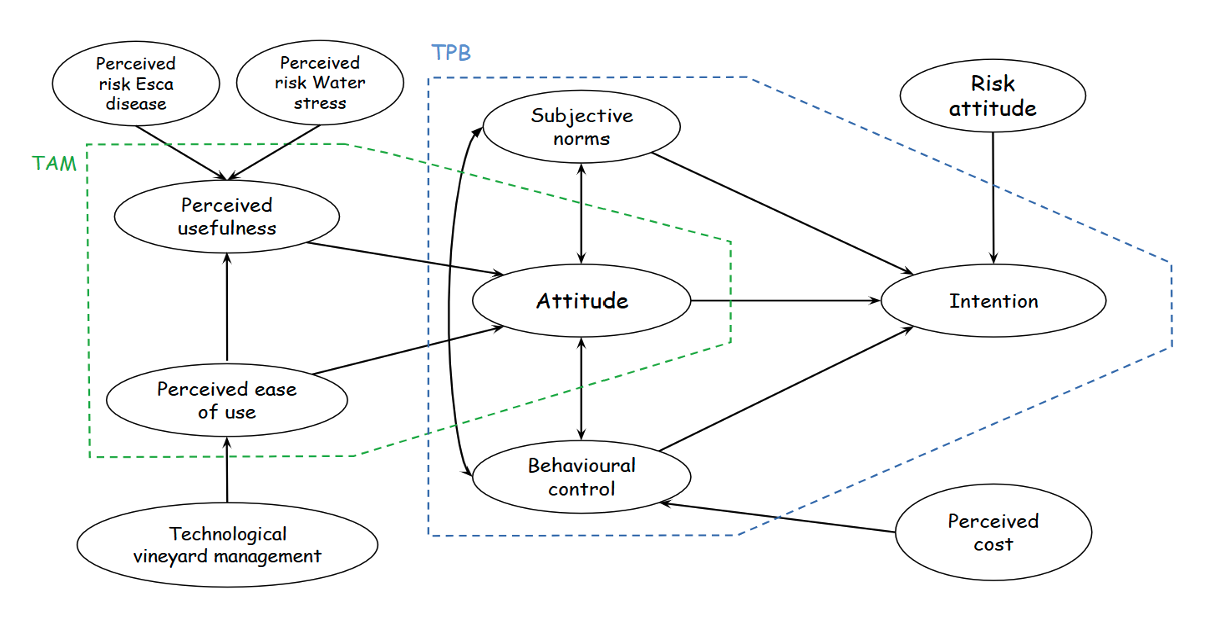
Microbial consortia as a tool for sustainable vineyard management: A study on their acceptance among Veneto region’s grape-growers
Abstract
Sustainability is a key focus in viticulture, where managing abiotic and biotic stress presents a major challenge. To address these issues and enhance plant resilience, adopting sustainable crop protection techniques, such as microbial consortia, is essential (Alikadic et al.,2019). Microbial consortia, symbiotic communities of microorganisms, offer an agroecological crop protection strategy that enhances crop health and resilience, ensuring stable yields, reducing plant protection costs, and minimizing environmental impacts in viticulture (Sandrini et al., 2022). Legislative frameworks like the EU Green Deal, Common Agricultural Policy, EU Directive 128/2009/EC and Italian Legislative Decree n°150/2012 support this innovation to reduce pesticide use and provide economic savings for farmers. The adoption of this technology depends on farmers’ acceptance. Socioeconomic barriers are key obstacles (Cullen et al., 2013). However, the role of socio-psychological factors is underexplored, requiring further research on why and how farmers adopt sustainable practices (Zeweld et al., 2017). This study aims to identify cognitive, social, and psychological factors influencing farmers’ adoption of microbial consortia in the Veneto region, correlating these with their economic resources. A model, like the one in Mohr and Kuhl (2021), combining the Theory of Planned Behavior (Ajzen, 1991), the Technology Acceptance Model (Davis, 1989), and five additional factors, has been developed (Fig.1).

Figure 1. Theoretical model to analyze farmers’ intention to adopt microbial consortia.
Specifically, a questionnaire, refined through a pilot test with 30 producers, will be distributed to 300 winegrowers in the Prosecco DOC area to assess the future adoption of the technology. Based on the literature review and pilot test results, we expect low adoption intentions for this innovation due to obstacles like economic resources, dispositional factors, social norms, and cognitive factors. Attitude (ATT) is the primary driver of adoption, with a strong positive effect on farmers’ decisions. Social norms have a minimal impact, mainly influencing attitudes rather than intentions, while perceived behavioral control (BC) plays a significant role. However, perceived cost may negatively affect BC and ATT, ultimately limiting adoption. Perceived usefulness is the strongest predictor of adoption, while perceived ease of use has less impact. Perceived risk, particularly concerning diseases like Esca, may encourage adoption by promoting preventive measures. In conclusion, perceived usefulness and attitude are key drivers of adoption, with social pressures playing a minor role. High cost perceptions could limit adoption, but clearer communication on the benefits of microbial consortia can enhance farmers’ understanding and increase adoption rates.
Issue: GreenWINE 2025
Type: Oral
Authors
1 Interdepartmental Center for Research in Viticulture and Oenology (CIRVE), University of Padua, Conegliano,31015, Italy
2 Department of Land, Environment, Agriculture and Forestry, University of Padova, Legnaro (Padova), 35020, Italy
3 Research Centre for Viticulture and Enology, Council for Agricultural Research and Agricultural Economy Analysis (CREA-VE), Conegliano,31015, Italy
Contact the author*
Keywords
sustainable viticulture, technology acceptance model, theory of planned behavior, microbial consortia
